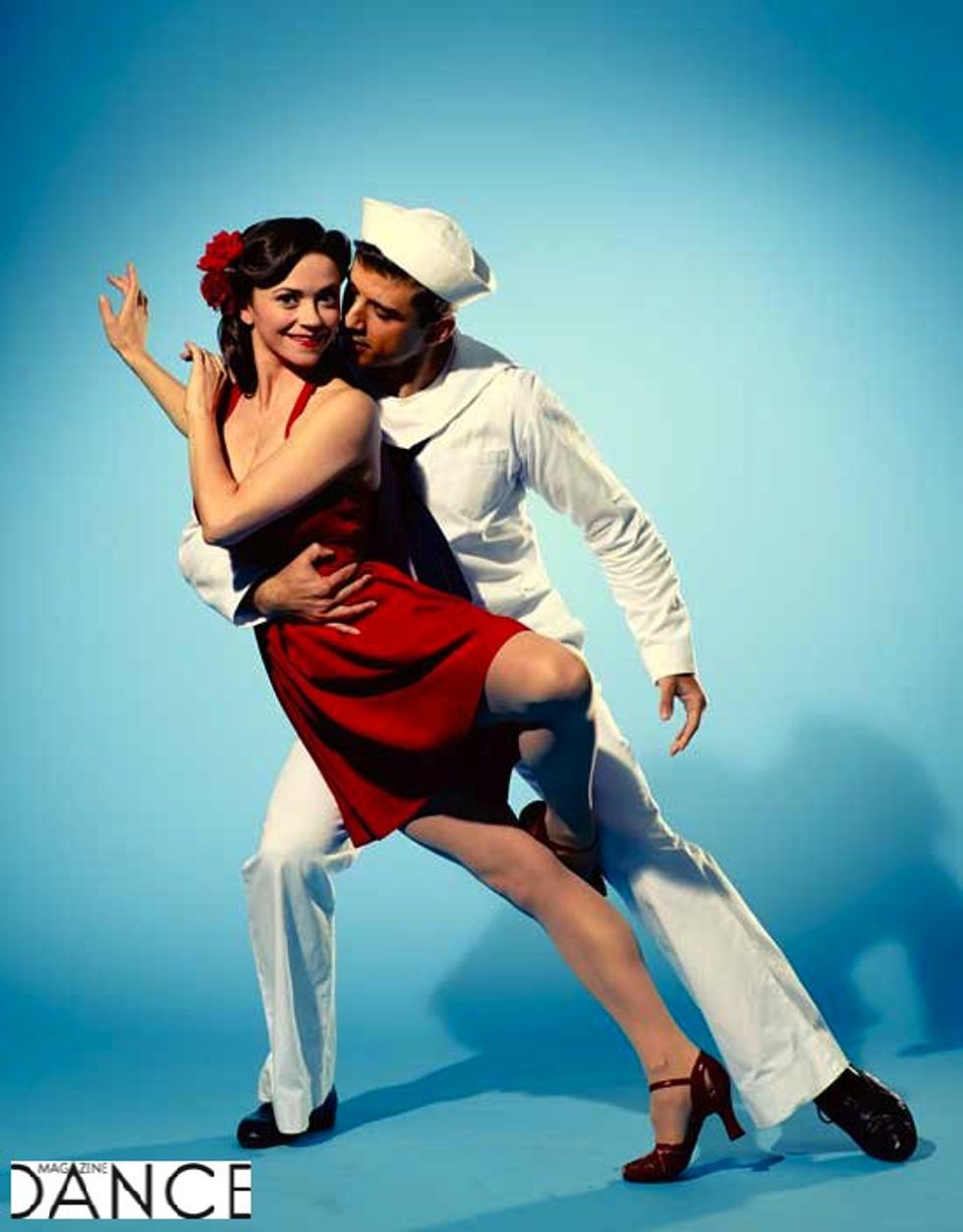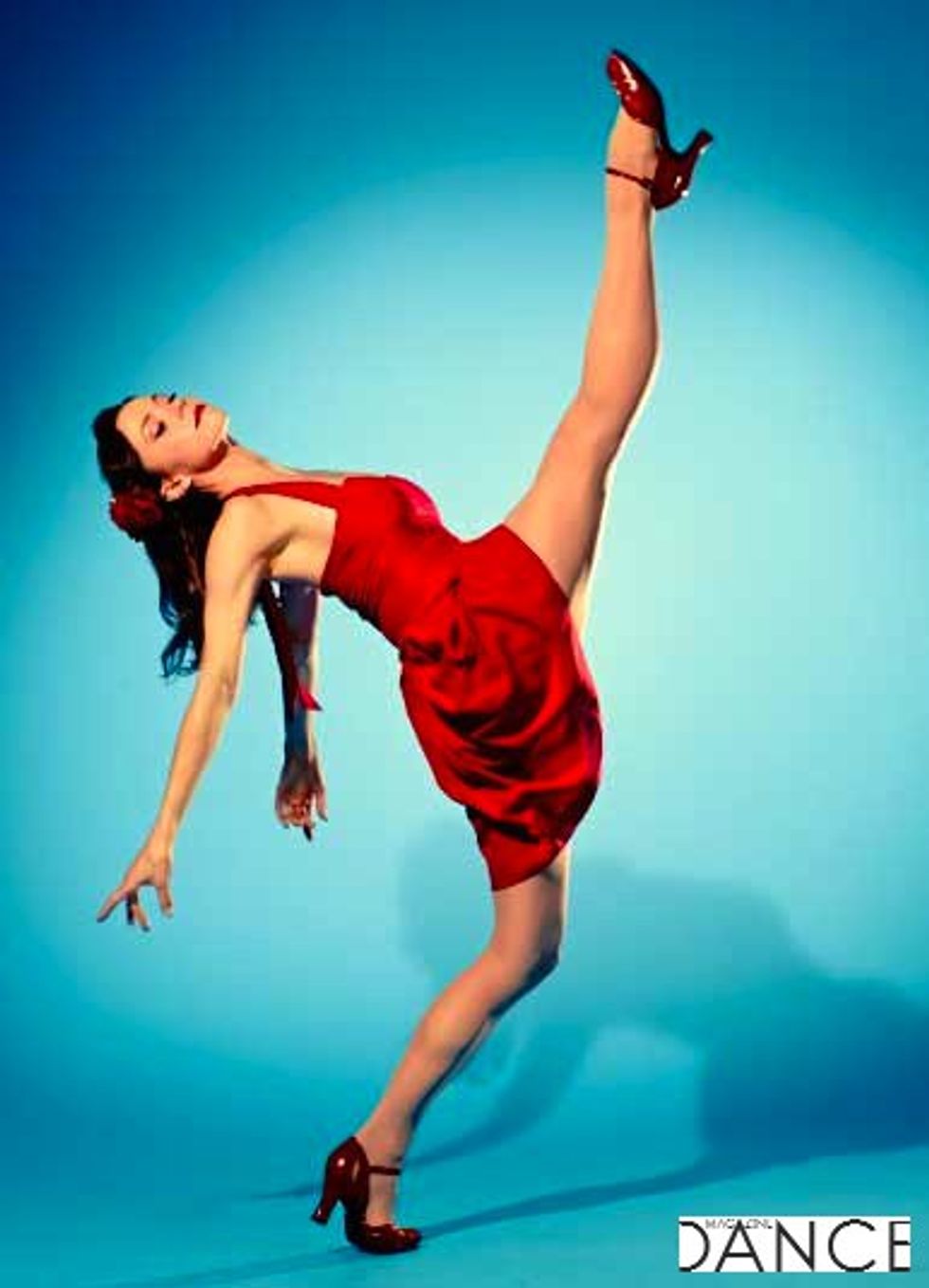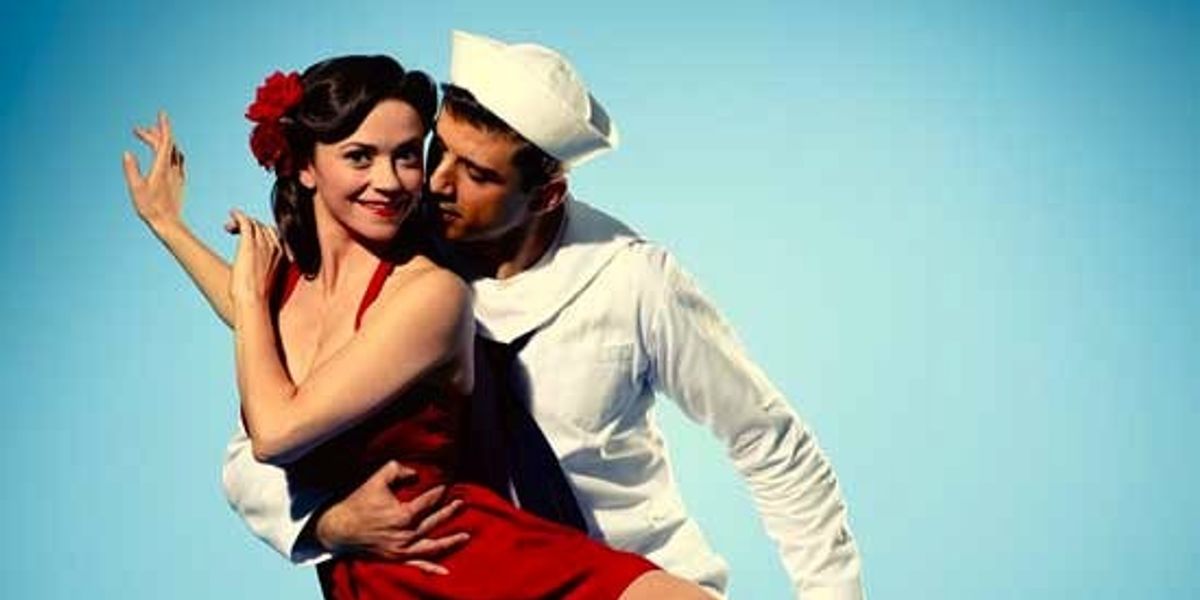Comeback Story
On the Town returns to Broadway—with a choreographic makeover.

On the Town leads Megan Fairchild and Tony Yazbeck. Photo by Nathan Sayers.
At first,
On the Town‘s charm seems far too retro and its storyline a little too thin to make a 21st-century comeback. Take our three wide-eyed sailors, whose ship has docked in New York City, leaving them 24 hours to find a date—“maybe seven or eight.” Their dream woman is an exhausting list of perfection: a homemaker who has your pipe and tobacco waiting upon your return, a high-society girl, the perfect arm candy to take to the ball. “She’s a frail and flower-like creature. But, oh boy, what an athlete!” You know, just your average girl.

Joshua Bergasse working with the dancers. Photos by Jenny Anderson, Courtesy On the Town.
It soon becomes clear, though, that there’s substance hidden within this cheeky story. It’s 1944, World War II is raging and these men have been given one day of freedom. Why shouldn’t they spend their short time on land living carefree? When the sun rises, they’ll have to load back onto their ship and head into battle—who knows what’s waiting for them there.
When director John Rando’s revival of On the Town hits Broadway this month, those themes that resonated with audiences in 1944 will again take center stage. Rando has kept most of the score and script true to the original version of the musical, which grew out of the runaway popularity of Jerome Robbins’ ballet Fancy Free, and introduced Robbins to Broadway. Yet despite that history, Rando’s made one major change: updating Robbins’ choreography to give it a 21st-century flavor, courtesy of Joshua Bergasse.
Unlike the musical’s beginnings,
today’s On the Town didn’t begin with dance. It didn’t begin with Bergasse or Broadway in mind, either. In 2008, Rando produced a concert version for City Center Encores! to celebrate Leonard Bernstein’s 90th birthday. It had less dancing than the full production, and what was included was Robbins’ original choreography. But it got people talking. Soon, Barrington Stage Company in Pittsfield, Massachusetts, asked Rando to do the musical for its 2013 season.
From the start, his vision was to follow the original music and book—unlike the 1949 film, which had thrown out much of Bernstein’s score—because those elements “just couldn’t be better.” But he felt the production needed a touch-up to make it relevant to today’s audience. Rando approached Bergasse, who, though best known for his work on NBC’s “Smash,” had performed Robbins’ West Side Story and is certified by the Jerome Robbins Foundation to teach it. “Josh is so wonderfully in tune with the tradition of dance and how to make it seem new, relevant and alive,” says Rando, who had collaborated with Bergasse on several projects, including Guys and Dolls and Little Me. “He works with a great admiration for the creators, in celebration of them. I needed that sense of invention to build on the storytelling in the script.”
It would seem that following in Robbins’ footsteps would put an immense amount of pressure on a choreographer—especially given this will be Bergasse’s choreographic debut on Broadway (though he has two other musicals, Gigi and Bull Durham, opening within the next year). But mounting the production in Barrington allowed Bergasse to take the risk. “I was lucky. Of course I wanted to do a great job, but there weren’t supposed to be a lot of critics there,” says Bergasse. “I didn’t get into my head too much.”

Joshua Bergasse working with the dancers. Photos by Jenny Anderson, Courtesy On the Town.
Once it opened, however, the Broadway community got word that something special was brewing. People were driving up to Massachusetts to get a look. There was talk of a transfer to the Great White Way. The New York Times even dubbed it “one of those rare revivals that remind us what a hit show from long ago was originally all about.”
Bergasse’s take relishes old-Broadway nostalgia.
“We kept asking, ‘How would this have been done in the original production?’ ” he says. “Well, none of the sets would have been on tracks.” So he had the actors push scenery onstage themselves. He and Rando also redeveloped the number “Gabey’s Comin’,” which was cut from the original show. And “Do Re Do” was redone to reference a Robbins scene from a different musical of the same era, High Button Shoes, where the choreography involves a lot of mystery doors.
Bergasse has been criticized by some for choreographing too close to Robbins’ style—the movement is rooted in classic jazz that consciously echoes the original’s robust steps. But it’s clear he’s added a refreshing touch. “Josh’s choreography is a little more down in the dirt, a little grittier,” says Tony Yazbeck, who has been playing the main character, Gabey, since the show’s City Center beginnings. “There’s an energy onstage that has become very Josh.” Somehow, Bergasse has a way of making completely opposite textures melt together: His choreography is undeniably charming, but also steaming with sensuality. It’s light and airy, with a muscular punch. It’s filled with “real” dancing, but has gestures and quirks that make it so very personable.
Megan Fairchild, who plays Gabey’s love interest, Ivy, and has performed many Robbins ballets at New York City Ballet, feels Bergasse has successfully maintained what was great about the original. At NYCB, “we’re told stories that Jerry used to say ‘Just mark it,’ so the choreography didn’t look forced,” she says. “Josh’s work is perfect in that way: Nothing is overdone, but the syncopations and style are in there.”
His objective was to put dance at the heart of this story. “You fall in love with these characters through dance,” says Bergasse. “It’s the way you really get to know them. There’s something to be said for the feeling you get when these three sailors come off the ship and start dancing.”
It’s those feelings that make this musical still so compelling. When Gabey sings “Lonely Town,” you sympathize with the isolation war brings, and perhaps realize that those struggles are no different for service members today. There’s pride to be found in watching the three spunky, forward-thinking women, at a time when women’s rights were taking a great turn. And when Bernstein’s “New York, New York” comes crashing in, you feel the sailors’ big city wonderment, so bright and naïve. “It’s an embrace and celebration of New York,” says Rando. “What an amazing and complicated place to be here, to be in love here.”
Kristin Schwab is Dance Magazine’s associate editor.

Megan Fairchild
The New York City Ballet principal will make her Broadway debut in the role of Ivy, taking leave for most of NYCB’s 2014–15 season to fulfill her eight-show-a-week contract.
Previous acting experience:
“I once played Claudius—a man!—in our fourth-grade production of Hamlet. When I was asked to audition for Ivy, I initially thought, Oh, I can’t sing or speak onstage. That’s just not what I do.”
Ballet breakthrough:
Fairchild is often cast in highly technical, abstract ballets at NYCB. She has never danced Robbins’ Fancy Free, for example. “This is a very different type of thing for me to be doing,” she says. “I’m excited to see where it takes me as an artist.”
Biggest challenge:
“To be sexy onstage—that’s totally new to me. I’m not very comfortable with myself in that way, but it’s inside of me.”
Future Broadway plans?
Not anytime soon, “but I definitely wouldn’t rule anything out.”
Tony Yazbeck
After making a name for himself in A Chorus Line and Gypsy, Yazbeck has performed Gabey in each version of John Rando’s On the Town.
His freshest approach yet: “Frankly, I’m six years older now than when we first did it. I’m not this young, bright-eyed actor anymore. Gabey is a hopeless romantic and I feel like I am that way in my life.”
Beginnings: Yazbeck grew up watching Fred Astaire and Gene Kelly. After studying at Point Park and the University of Cincinnati College-Conservatory of Music, he tried the struggling-actor thing in New York. “I was pretty broke—like, $100-to-my-name broke.”
Biggest challenge:
Yazbeck’s longest run with On the Town was three and a half weeks, so he’s most concerned about getting through eight shows a week for an extended time. But that, he says, is exactly what makes live theater an art. “Sometimes you connect with one part of the show and sometimes you connect with others. Performers need to let themselves be surprised each time they do a run.”
On the Town
starts previews at the Lyric Theatre September 20, with opening night set for October 16. —KS
Photos by Nathan Sayers.




